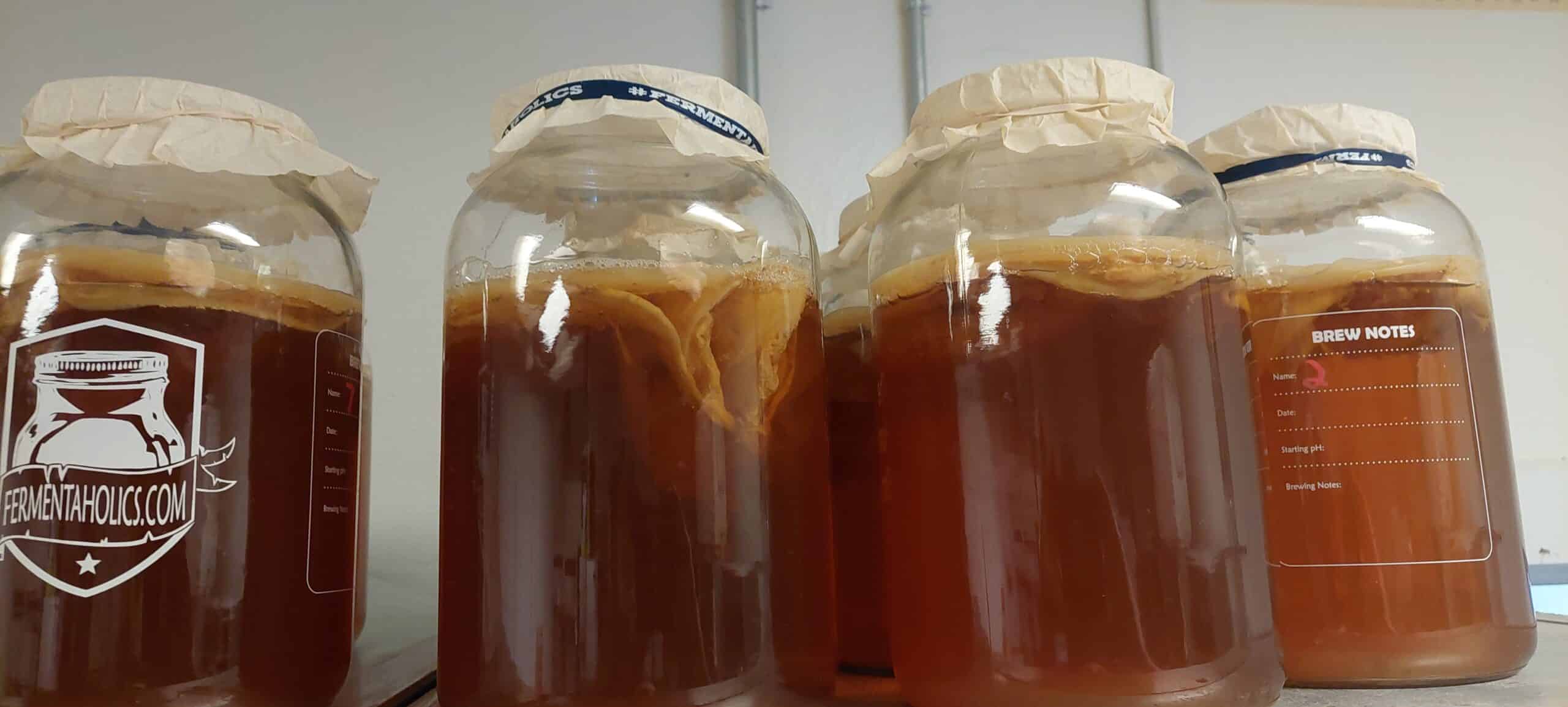Your cart is currently empty!

Short on ingredients for dinner, you decide to head to the grocery store. You walk through the store and stumble upon a section of strange bottled drinks near the produce section. Colors pop out to you from the bottom of the shelf to the top. Flavors ranging from apple, strawberry, mint, ginger, pear, and even beet juice and carrot grab your attention.
Suddenly you forget the reason you came here in the first place; you feel thirsty. The soda you had a few hours back wasn’t satisfying and sapped you of energy, so you’re in the mood for something healthy. You pick up a bottle that reads “Kombucha”. “Come-boo-chah?” you chant oddily in the aisle, a young girl tugging her parent’s arm asking what the strange person is saying.
You go with your gut, and purchase this “kombucha”. Why? Because you read on the bottle how it’s fermented and that there’s millions of probiotics, and that just might be what your sad gut is looking for. You take a swig of it when you exit the store and shout “eureka!”. Suddenly your body levitates, and light bursts from all around you. You’re glowing! You’ve reached Nirvana!
Seriously, what is Kombucha?
Alright, maybe I got carried away at the end there, but that’s the story of how I tried my first flavored fermented tea, kombucha… sort of.
So what is Kombucha and why do big chain retail stores stock it? Originating in China thousands of years ago, it is essentially a lightly carbonated tea that goes through an intricate process of fermentation. It typically tastes sweet, tangy and usually contains carbonation as well as flavorings ranging from fruity to herbal.
It all starts with a SCOBY. Yes, that is a rather unique name. It is abbreviated for “Symbiotic Culture Of Bacteria & Yeast”. Confused? It’s a healthy bacteria that’s shaped like a disk and pale in color. A jelly-like substance that may look off-putting but is in fact very cool at parties!
There are many strands of bacteria, that make up the scoby, mainly acetic acid, with the yeast being made up of mainly Brettanomyces, Candida, Saccharomyces, and Zygosaccharomyces. Of course, these yeast bacteria aren’t in the form that makes us humans sick, and instead are very much edible. That’s only a few aspects of the scoby composition. But enough about that!
Let’s Brew this ‘Buch!
The scoby, along with the starter liquid (fermented tea from a previous batch), is added to an unflavored sweet “true” tea, meaning the leaves are harvested from a Camellia Sinensis plant. All types of true tea can be used, with Black tea, Green Tea and Oolong being the most popular choice among Kombucha brewers. This process begins first fermentation. Some brewers use honey, brown rice syrup, date sugar, and other forms, however organic white sugar works just fine and isn’t difficult for the scoby to feed off of. Proper sanitation and sterilization during all stages of the process are top priority.
You read that correctly. The scoby feeds off the sugar within the sweet tea, producing CO2 and ethanol, but well below the 0.5% threshold required for the brew to be considered an alcoholic beverage. That tea sits for several days in a brewing vessel covered with a cheesecloth or coffee filter to allow the scoby to breathe as well as keep bad bacteria out.
Optimal temperatures between 75 and 85 degrees Fahrenheit keep the scoby alive and thriving. Too cold and the scoby will go dormant; too hot and the scoby will die a tragic death, and nothing pains me more than finding a dead scoby at my own fault.
A Word on Acidity and Alkalinity
Lastly, pH is a very important factor. Kombucha is safe for consumption when it reaches a pH between <4.2 and >2.5. Proper acidity is very important! Too high and it allows an environment for bad bacteria to grow. Too low and the beverage is too acidic for human consumption. Apple cider vinegar sits at around less than 2.5, so might give you an idea of how acidic these things can get if sitting too long.
If sugar is continuously added there is a chance for ethanol (alcohol) to be produced within the brew. If all of the sugar is consumed, then the brew can start to develop into vinegar.We won’t discuss second fermentation here, however it is an extra process to carbonate and add flavoring to kombucha after it’s first fermentation.
Where to Find this ‘Buch Today
Stated earlier, kombucha is a vastly popular health beverage found all over the world. To learn more about the health effects of kombucha, check out our post about it here. The USA alone brought in nearly $700 million in 2023 from kombucha sales, and that number increases each year. There are many companies that produce kombucha such as GT, Dr Brew, Health-Ade, and Kevita.
At Bucha Bros, LLC, we’re a startup business local to the South-Western Massachusetts region. We brew in Worcester, MA and our base of operations is right in the quiet town of Wales, MA, with a community both bigger and louder than the town itself.
We’re passionate about kombucha so much so that we drink it ourselves. We use only organic or locally sourced ingredients, and never pasteurize or utilize force carbonation into our kombucha. So don’t be a little ‘buch, be a bro instead and support us at https://buchabros.com/!
Thank you for taking the time to read this, and have a wonderful holiday this winter 2024 season!

2 responses to “What in the world is Kombucha? ”
Were in wales r you i live here too
While we don’t have a physical location at the moment, our base of operations is right in Wales, MA.